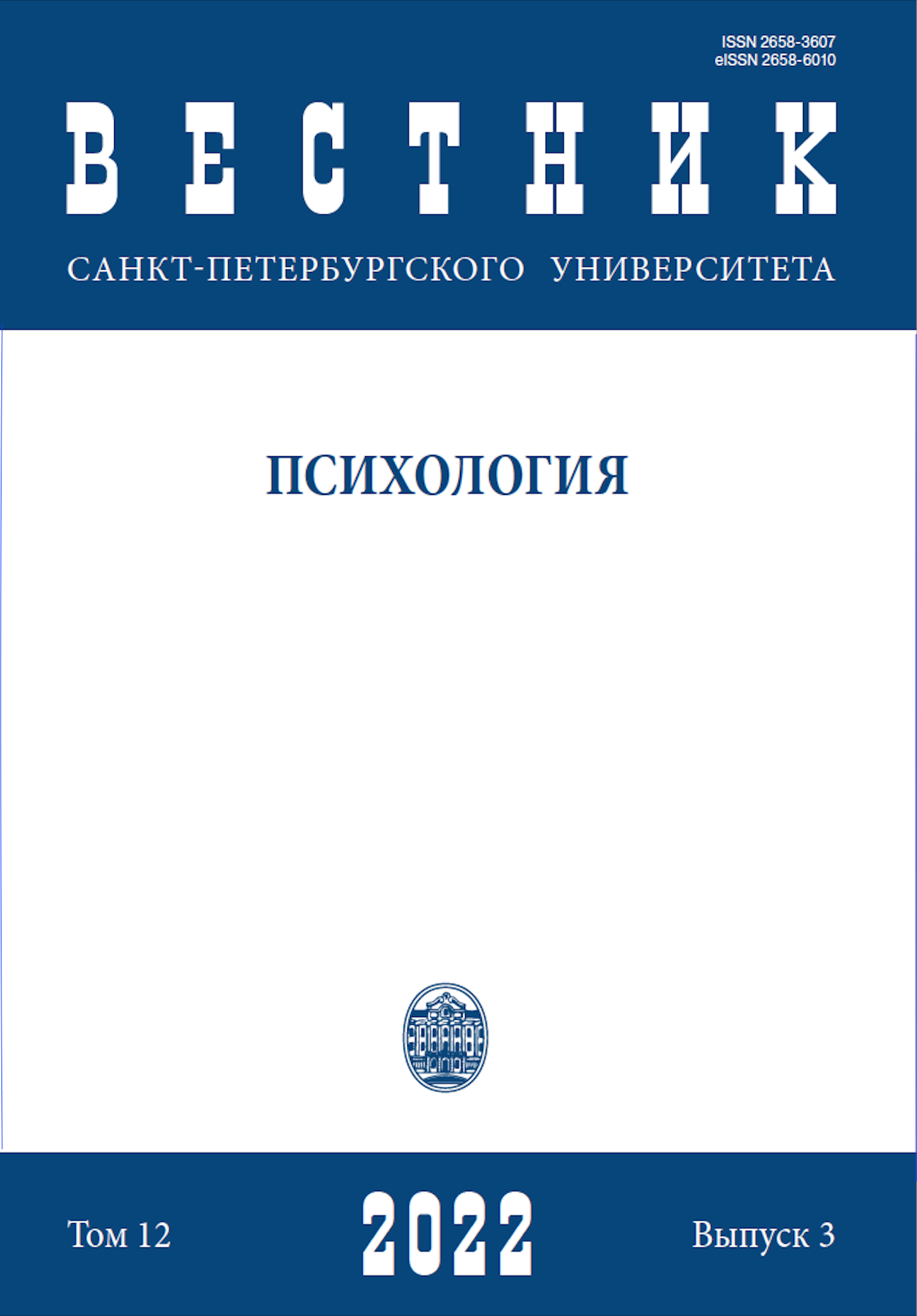Адаптация Шкалы самоидентификации глухих и слабослышащих людей (DIDS)
DOI:
https://doi.org/10.21638/spbu16.2022.305Аннотация
Одним из препятствий в понимании глухоты как культурного различия между людьми является отсутствие в России на сегодняшний день моделей и методик, которые изучали бы аккультурацию или идентичность глухих людей. Апробация и валидизация Шкалы самоидентификации глухих и слабослышащих (DIDS), основанная на модели развития культурной идентичности Гликмана, могла бы внести свой вклад в изучение самоидентификации глухих людей в России, создав надежный методический инструмент для практических психологов системы специального среднего и высшего профессионального образования. Целью данной статьи является представление материалов поэтапной психометрической проверки опросника DIDS, полученных на выборке глухих и слабослышащих студентов, обучающихся в разных институциональных условиях в возрасте от 17 до 41 года (N = 420; M = 21,88; SD = 5,24). Конфирматорный факторный анализ (КФА) показал, что все шкалы независимы друг от друга. Для проверки согласованности шкал использовался коэффициент Кронбаха, продемонстрировавший высокую согласованность каждой шкалы на общей выборке (α-Кронбаха от 0,704 до 0,767), а также на подвыборках мужчин и женщин (α-Кронбаха от 0,629 до 0,801) и у разных возрастных групп (α-Кронбаха от 0,687 до 0,862). Для проверки устойчивости шкал также проводился анализ на подвыборках лиц с разной степенью потери слуха со слуховым аппаратом (α-Кронбаха от 0,653 до 0,832) и без него (α-Кронбаха от 0,688 до 0,801). Внутренняя согласованность опросника подтверждается корреляционными связями между шкалами. Дискриминативность пунктов внутри шкал также проверялась с помощью корреляционного анализа. Полученные результаты подтвердили соответствие рассматриваемого конструкта. В результате российская адаптация американской шкалы DIDS сокращена на 20 утверждений, что увеличило внутреннюю согласованность и надежность методики. Анализ психометрических свойств шкалы DIDS подтвердил возможность его использования у глухих и слабослышащих россиян.
Ключевые слова:
идентификация, глухота, аккультурация, бикультурализм, маргинальность
Скачивания
Библиографические ссылки
References
Загрузки
Опубликован
Как цитировать
Выпуск
Раздел
Лицензия
Статьи журнала «Вестник Санкт-Петербургского университета. Психология» находятся в открытом доступе и распространяются в соответствии с условиями Лицензионного Договора с Санкт-Петербургским государственным университетом, который бесплатно предоставляет авторам неограниченное распространение и самостоятельное архивирование.




